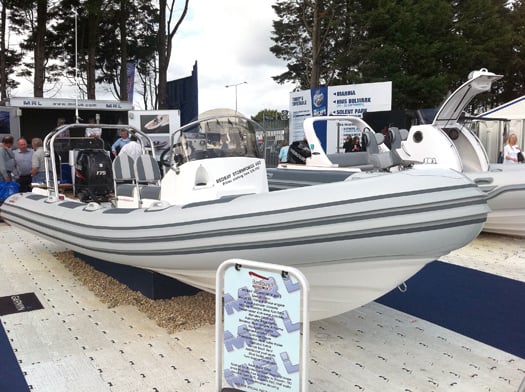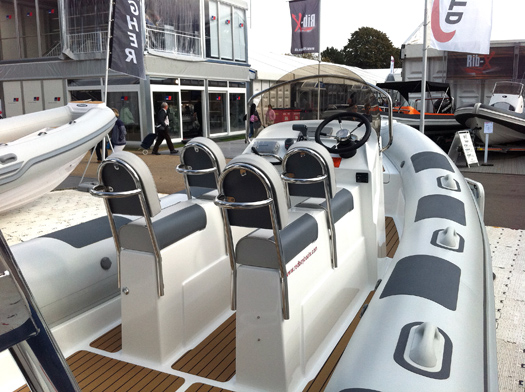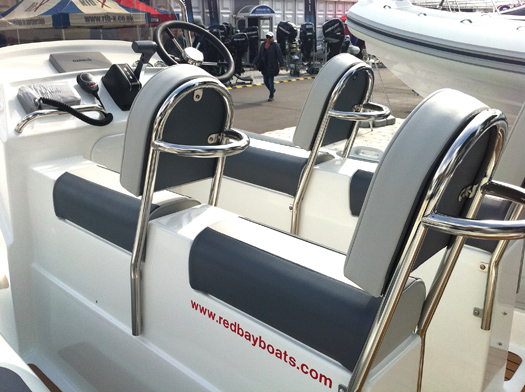Displaying items by tag: Red
Stunning New Look to McLaughlin's Red Bay 650 RIB
There's a new look to Red Bay Boats all new look 6. 5 metre RIB and by all accounts from this week's Southampton Boat Show the Irish built performance RIB is a real head turner. They could've easily be dubbed the Show boat, 'Silver shadow' or then again 'White Lady' with her stunning tubes, stianless steel work, seating and white hull.
The Stormforce 650 is one of the most innovative RIBs produced by Redbay so far. The design came from a need for a standardised RIB of around 6.5 metres that could be built quicker and lighter in the County Antrim factory.
The 650 has one of the best handling hulls in its class, and we've seen her easily out-perform larger rival RIBs in rough weather. Although the basic hull is that of the Stormforce 6.5, the 650 features a redesigned bow and sheer line.
Master boat builder Tom McLaughlin was on the Southampton stand talking to Rib enthusiasts from across Ireland and the UK. The Red Bay name is now synonymous with heavy weather Ribbing and the boats have a reputation for their safety and comfort in big seas.

The 650 features a fully moulded internal deck. This gives a a fresh clean appearance. It also makes it easy to maintain. The 650 features a standard 4 seater side by side console and bow locker. The deck can be either finished in a quality non-slip coating or as in the case of the Show boat above with an in tek-deck.
It is fitted with a 175hp Suzuki 4-stroke outboard, 4-seater console, Garmin 750s touchscreen chartplotter, Garmin 100i DSC VHF, teak-decking, LED navigation lights.

Do Some Funny Sailing for Comic Relief
In Weymouth, SailLaser's RYA Onboard Club are invited to teach a friend to sail in a Laser Pico before heading off to the race course in pairs. The race around a short course will have the added challenge of collecting as many letters from each turning mark as possible. The winners will be those who can spell the longest word from the letters they collect at the end of the race!
SailLaser's "Race Club" members will also be able to introduce a friend to sailing and after a short introduction they will battle it out on the race course in the fleet of Laser Bahias.
In Scotland, RYA OnBoard Club fund raisers will take part in a multi-disciplined "Tri-Mile" event. The Tri-Mile will include a run, pedal and sail; running from the start line to a pedalo on the shore, pedalling to a Pico moored in the middle of Strathclyde Loch and racing the Pico around a course before arriving back at the shore and running to the finish line!
To add to the fun, competitors, organizers and helpers are encouraged to wear fancy dress. The theme is RED!
"This is a great opportunity for all of our regular sailors to get on the water with a friend as well as raising money for Comic Relief" explains Hannah Burywood, event organiser at SailLaser Weymouth.
The charity Comic Relief was launched on Christmas Day in 1985 from a refugee camp in Sudan. The highlight of Comic Relief's appeal is the bi-annual Red Nose Day. The first Red Nose Day was held in 1988 and £15 million was raised. In 2009, over 5 times that amount was raised to support projects in 25 African countries and the UK. SailLaser is proud to do their bit to support Comic Relief in 2011.































































